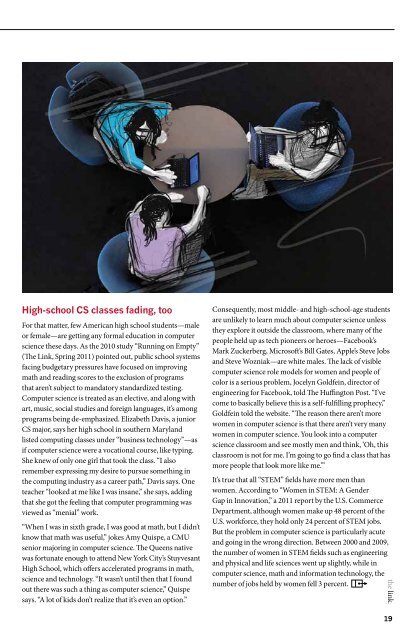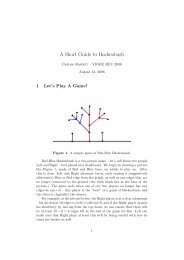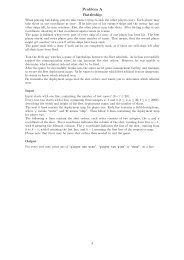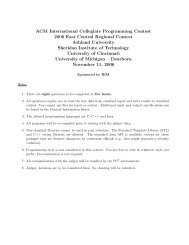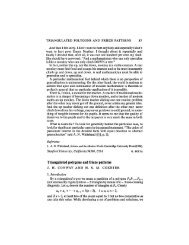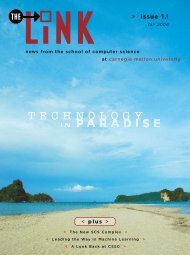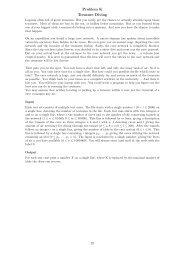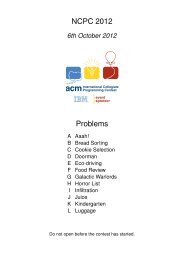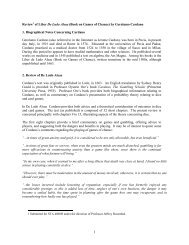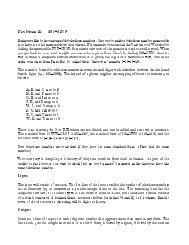Download now (1.3MB, PDF reader required) - Link home page
Download now (1.3MB, PDF reader required) - Link home page
Download now (1.3MB, PDF reader required) - Link home page
Create successful ePaper yourself
Turn your PDF publications into a flip-book with our unique Google optimized e-Paper software.
high-school cs classes fading, too<br />
For that matter, few American high school students—male<br />
or female—are getting any formal education in computer<br />
science these days. As the 2010 study “Running on Empty”<br />
(The <strong>Link</strong>, Spring 2011) pointed out, public school systems<br />
facing budgetary pressures have focused on improving<br />
math and reading scores to the exclusion of programs<br />
that aren’t subject to mandatory standardized testing.<br />
Computer science is treated as an elective, and along with<br />
art, music, social studies and foreign languages, it’s among<br />
programs being de-emphasized. Elizabeth Davis, a junior<br />
CS major, says her high school in southern Maryland<br />
listed computing classes under “business technology”—as<br />
if computer science were a vocational course, like typing.<br />
She knew of only one girl that took the class. “I also<br />
remember expressing my desire to pursue something in<br />
the computing industry as a career path,” Davis says. One<br />
teacher “looked at me like I was insane,” she says, adding<br />
that she got the feeling that computer programming was<br />
viewed as “menial” work.<br />
“When I was in sixth grade, I was good at math, but I didn’t<br />
k<strong>now</strong> that math was useful,” jokes Amy Quispe, a CMU<br />
senior majoring in computer science. The Queens native<br />
was fortunate enough to attend New York City’s Stuyvesant<br />
High School, which offers accelerated programs in math,<br />
science and technology. “It wasn’t until then that I found<br />
out there was such a thing as computer science,” Quispe<br />
says. “A lot of kids don’t realize that it’s even an option.”<br />
Consequently, most middle- and high-school-age students<br />
are unlikely to learn much about computer science unless<br />
they explore it outside the classroom, where many of the<br />
people held up as tech pioneers or heroes—Facebook’s<br />
Mark Zuckerberg, Microsoft’s Bill Gates, Apple’s Steve Jobs<br />
and Steve Wozniak—are white males. The lack of visible<br />
computer science role models for women and people of<br />
color is a serious problem, Jocelyn Goldfein, director of<br />
engineering for Facebook, told The Huffington Post. “I’ve<br />
come to basically believe this is a self-fulfilling prophecy,”<br />
Goldfein told the website. “The reason there aren’t more<br />
women in computer science is that there aren’t very many<br />
women in computer science. You look into a computer<br />
science classroom and see mostly men and think, ‘Oh, this<br />
classroom is not for me. I’m going to go find a class that has<br />
more people that look more like me.’”<br />
It’s true that all “STEM” fields have more men than<br />
women. According to “Women in STEM: A Gender<br />
Gap in Innovation,” a 2011 report by the U.S. Commerce<br />
Department, although women make up 48 percent of the<br />
U.S. workforce, they hold only 24 percent of STEM jobs.<br />
But the problem in computer science is particularly acute<br />
and going in the wrong direction. Between 2000 and 2009,<br />
the number of women in STEM fields such as engineering<br />
and physical and life sciences went up slightly, while in<br />
computer science, math and information technology, the<br />
number of jobs held by women fell 3 percent.<br />
the link.<br />
19


